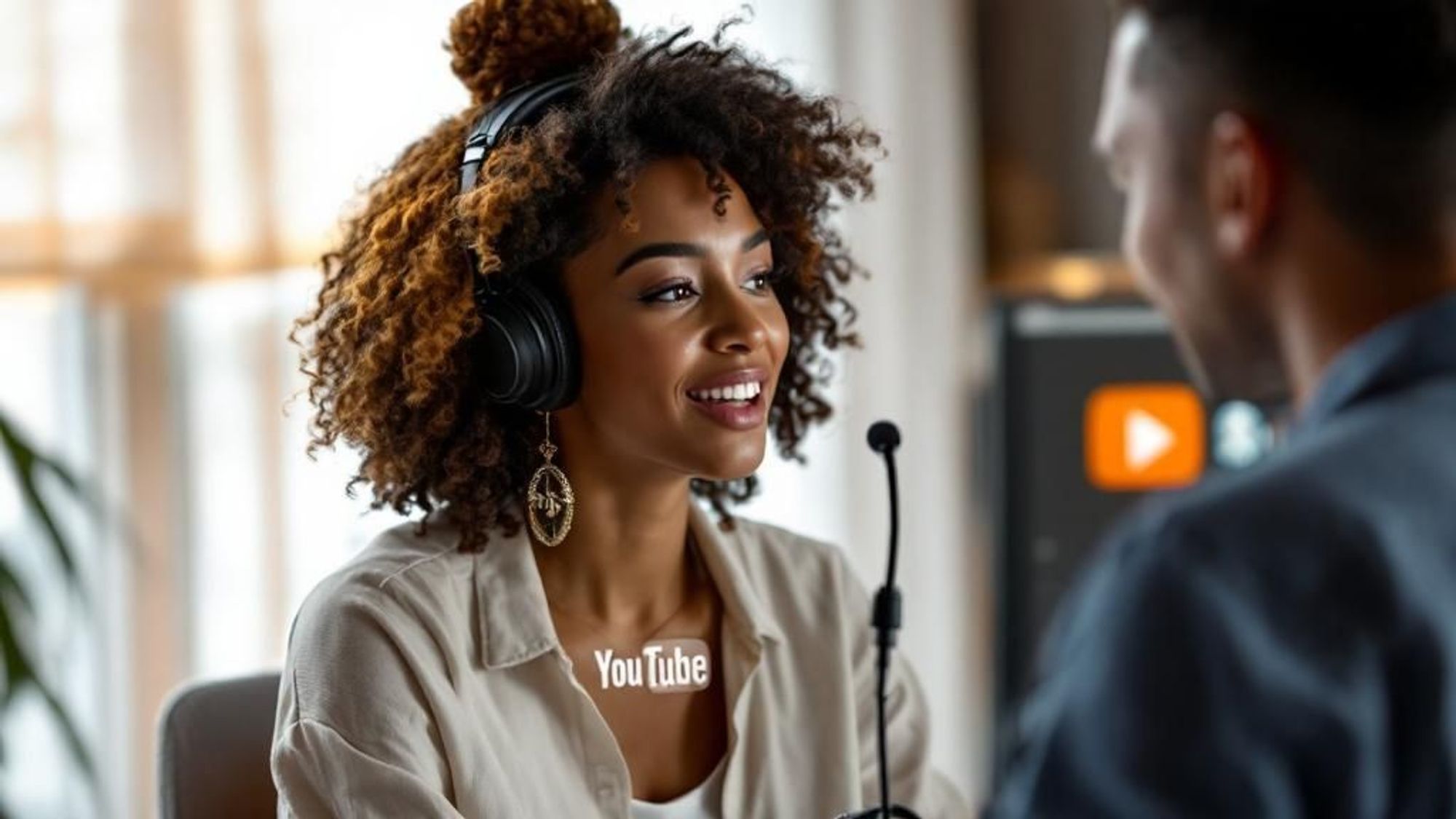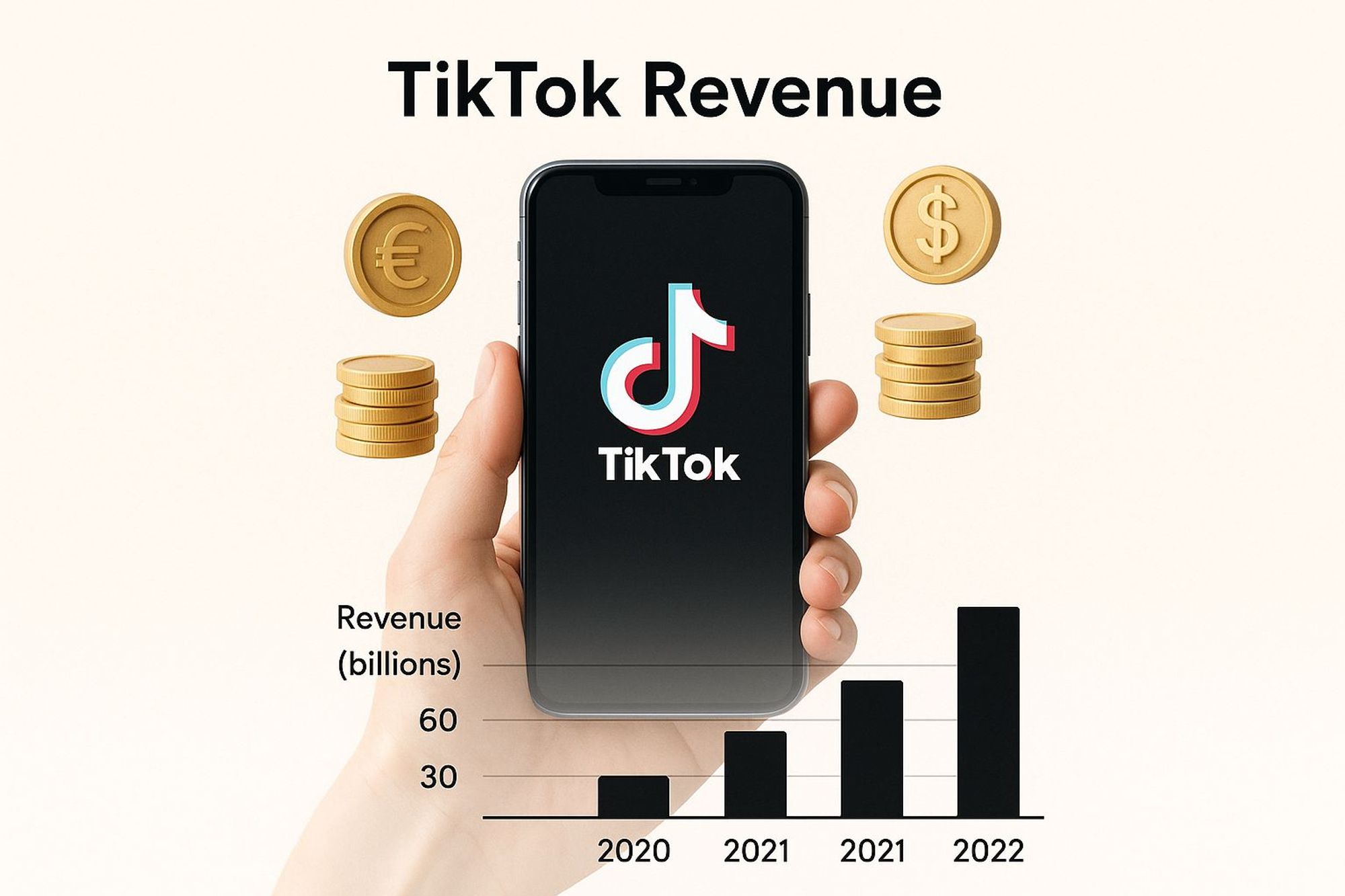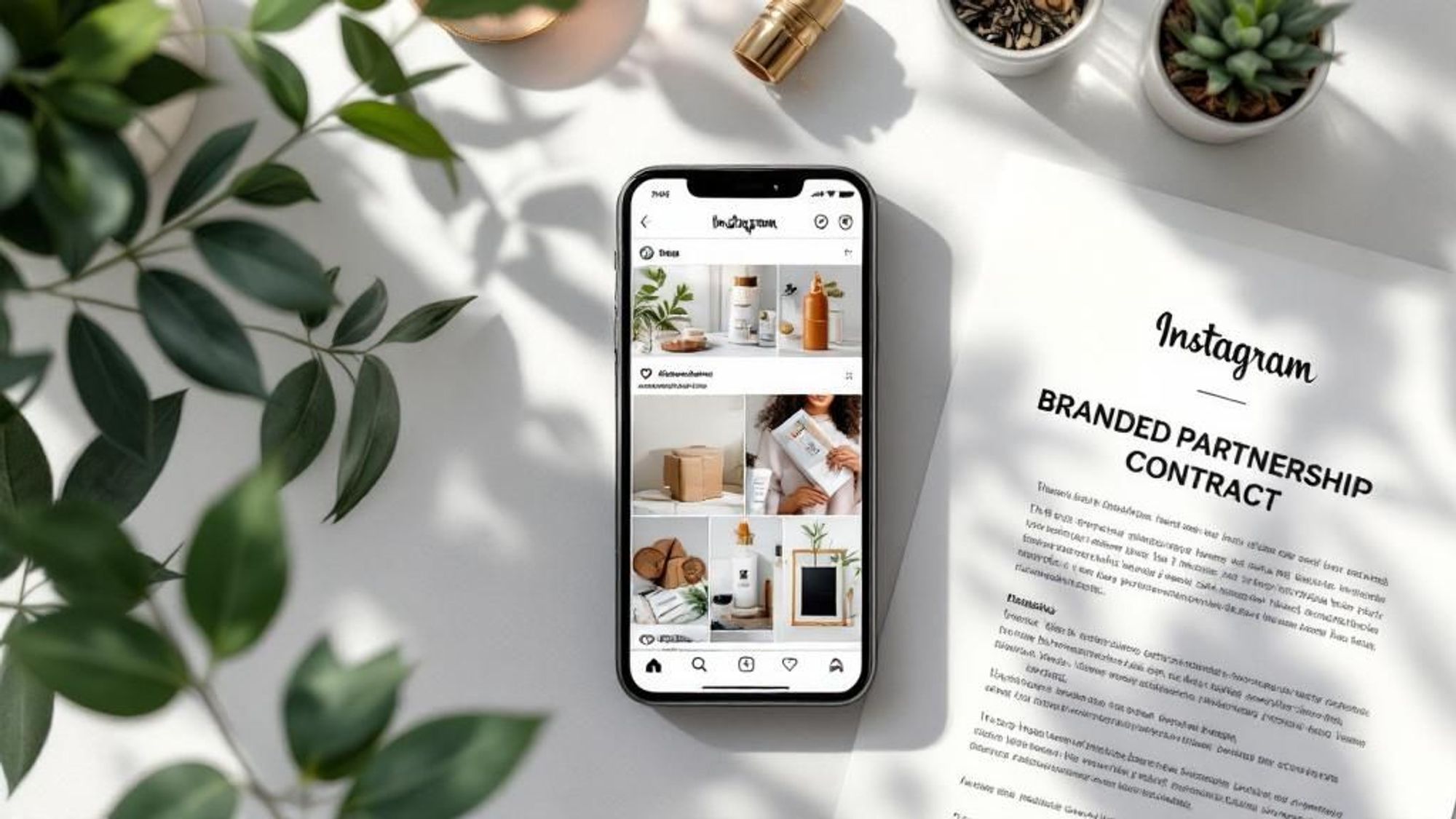Saturday, July 26, 2025
What Social Media Pays the Most for Creators


When you ask what social media pays the most, one platform consistently stands out from the pack: YouTube. It's not just about the sheer size of its audience. The real difference lies in its robust, mature ad-revenue sharing model and a whole ecosystem of monetization tools that let creators build genuine, high-earning careers far more reliably than on other networks.
Which Social Media Platform Pays Creators The Most
Sure, platforms like Facebook and Instagram pull in massive revenue, but the slice of that pie they pass back to creators can be smaller and much less predictable. The key to understanding your earning potential isn't just a platform's popularity—it's the nitty-gritty of its monetization structure. And this is where YouTube has held a commanding lead for years.
A 2025 study of 1,500 monetizing creators drives this point home. A significant 28.6% of them pointed to YouTube as their single highest source of income. TikTok came in next at 18.3%, with Facebook and Instagram trailing behind. This data really highlights that the most profitable platforms are the ones built around direct, transparent creator compensation.
Comparing Top Earner Platforms
To get a clearer picture of the landscape, it helps to see how the top players stack up side-by-side. For a deep dive into what specific influencers are making, you can find guides on how much influencers charge, but the table below gives a quick snapshot of the models and potential.
I've put together a quick-glance table to summarize where the real money is and which platform might be the best fit for your specific content style.
Creator Earning Potential Snapshot by Platform
| Platform | Primary Monetization Model | Earning Potential | Best For |
|---|---|---|---|
| YouTube | Ad Revenue Sharing (55% to creator) | Very High | Long-form content, educational videos, vlogging |
| TikTok | Creator Rewards Program & Live Gifts | High | Viral short-form content, trends, live streaming |
| Brand Deals & Affiliate Marketing | Moderate to High | Visual niches (fashion, beauty), influencer marketing | |
| In-Stream Ads & Performance Bonuses | Moderate | Community-building, older demographics, Reels |
This table shows that while you can earn well on platforms like TikTok and Instagram, their models are often less direct. Success there usually depends more on creator funds, live gifting, or brokering your own brand deals.
Key Takeaway: YouTube’s real power comes from its direct 55% ad revenue share. It's a clear, transparent model that offers a much more predictable income stream compared to the often-changing and sometimes confusing creator funds on other platforms.
This structure means your earnings scale directly with your viewership. As your channel grows, so does your income—it's that simple. We'll get into the specific payout rates and features next, but if you want the full, detailed breakdown, check out our complete guide exploring what social media platform pays the most.
Understanding How Social Media Monetization Works

Before we can crown a winner for what social media pays the most, we need to get real about how creators actually make money. It’s almost never a single paycheck from one place. Think of it more like a portfolio of different income streams, each with its own rules and potential.
Most of these methods fall into two buckets: direct monetization, where the platform pays you, and indirect monetization, where you use your audience to earn from other sources. The most successful creators I know have a healthy mix of both, building a much more stable financial base.
Direct Platform Payouts
This is money that comes straight from the social network. These programs are the most straightforward way a platform rewards you for keeping eyes on their site.
- Ad Revenue Sharing: The classic model, which YouTube practically perfected. Platforms run ads on your videos or content and split the revenue with you. YouTube’s famous 55% cut for creators is a great example. It’s a pretty transparent deal—your earnings grow as your views do.
- Creator Funds & Bonus Programs: This is TikTok and Instagram’s approach. They set aside a pot of money to pay creators based on performance metrics like views and engagement. The catch? These funds can be unpredictable, and the payout rates often change without much warning.
- Fan Funding Features: These are tools that let your audience support you directly. We’re talking about channel memberships, live-stream gifts (like YouTube's Super Chats or TikTok Gifts), and subscriptions for exclusive content.
A savvy YouTuber can stack these income sources. They can earn from ads on a video, collect monthly income from channel members, and even get tips during a live stream—all from a single platform. This is a huge reason some platforms have much higher earning potential than others.
Indirect Income Streams
This is where you use your influence to make money from outside sources. Frankly, this is where your personal brand becomes a real asset that you control. This approach often has a much higher ceiling, but it definitely takes more of an entrepreneurial spirit.
This includes things like brand sponsorships, where companies pay you to feature their products, and affiliate marketing, where you get a commission for sales made through your unique links. Beyond that, tons of creators sell their own products, whether it's merchandise, digital courses, or coaching. You can check out our guide on how to measure social media engagement to get a better handle on your audience's value.
On top of all that, creators can use third-party tools to manage other revenue sources, like paid Telegram channel subscriptions. This adds another layer of income that’s completely independent of the big platforms.
When you're trying to figure out which social media platform pays the most, you have to look past the vanity metrics. Follower counts are one thing, but the real story is in the financial models each platform uses. And let me tell you, the differences are huge—they directly dictate how much cash you can actually pocket from your content.
Let's break down how the major players actually pay their creators.
H3: Direct Ad Revenue Sharing Models
The most reliable and, frankly, sustainable way to earn directly from a platform is through a clear-cut ad revenue sharing deal. This is where YouTube has been the undisputed king for years, setting a standard that others are still trying to match.
- YouTube's Partner Program: This is the gold standard for a reason. Creators get a straight 55% cut of the revenue from ads that run on their long-form videos. The transparency here is everything; your earnings are directly tied to your views and the ad rates in your specific niche. No mystery boxes.
- Facebook's In-Stream Ads: Facebook also splits ad revenue, but it often feels like a black box compared to YouTube. The exact percentage isn't as clear, and payouts are often swayed by performance bonuses, making them feel much less consistent month to month.
- X's Ad Revenue Sharing: The newcomer to the scene, X (formerly Twitter), shares ad money with creators, but there's a big catch. You only earn from ad impressions shown to verified Premium subscribers. This massively shrinks the pool of monetizable views, putting it in a different league than YouTube.
This image really drives home how different payout systems, like TikTok's, can dramatically change your earning potential.

As you can see, even though a platform might offer a bunch of ways to make money, the payout model itself—like a direct ad-revenue split versus a creator fund—is what truly matters.
H3: Creator Funds and Bonus Programs
On the other side of the coin, you have platforms that use fixed creator funds or bonus programs. This model is the go-to for short-form video, where slapping a traditional pre-roll ad just doesn't work.
TikTok and Instagram are the main players here. They basically set aside a massive pot of money and hand it out to creators based on metrics like views, engagement, and how often you post.
Critical Differentiator: Creator funds are notoriously volatile. The fund is a finite pie. As more creators jump in and more videos blow up, the slice of pie each creator gets (your payout per view) inevitably shrinks. This is exactly why you hear so many TikTokers complaining that their RPM (Revenue Per Mille, or what they earn per 1,000 views) is all over the place.
These programs can be a fast track to earning your first dollar, but they offer zero long-term predictability. Your income isn't tied to the ads people see; it's tied to the platform's budget and goodwill.
H3: Comparing Platform Payout Potential
To really get to the bottom of which social media platform pays the most, a side-by-side comparison is the only way to go. Let's see how these different models stack up in terms of real-world earnings.
Monetization Features and Payout Comparison
The table below gives you a detailed look at the core monetization programs, how creators are paid, and the typical rates you can expect across the big platforms.
| Platform | Monetization Program | Revenue Share / Payout Model | Typical RPM (Revenue Per Mille) | Eligibility Requirements |
|---|---|---|---|---|
| YouTube | Partner Program | 55% of ad revenue | $3 - $18+ | 1,000 subscribers & 4,000 watch hours (or 10M Shorts views) |
| TikTok | Creator Rewards Program | Performance-based fund | $0.02 - $0.04 | 10,000 followers & 100,000 views in 30 days |
| In-Stream Ads | Revenue share & bonuses | $1 - $10 | 10,000 followers & 600,000 total minutes viewed in 60 days | |
| Bonuses & Brand Deals | Primarily indirect or bonus-based | Varies (no direct ad RPM) | Varies by program; often invite-only |
The numbers don't lie. YouTube's model offers a dramatically higher earning ceiling from direct platform payouts. A video hitting one million views on YouTube could easily earn thousands of dollars. That same video on TikTok? You might be looking at just $20 to $40 from the Creator Rewards Program.
This huge difference makes it crystal clear: a platform's monetization philosophy is just as important, if not more so, than the size of its audience.
Why Platform Growth and Demographics Matter

When you're trying to figure out which social media platform pays the most, it's easy to get tunnel vision and focus only on payout rates. But that's only half the story. The size and makeup of a platform's audience are just as crucial, because they directly dictate how much advertisers are willing to pay to get in front of them.
Think of it like this: a huge, engaged user base is the engine that drives a platform’s ad revenue. That revenue, in turn, is what funds the creator payouts you’re aiming for.
Platforms like YouTube and Facebook are like massive digital cities. Their sheer scale—billions of users—creates an enormous marketplace for advertisers. This generates the kind of revenue needed to support substantial, consistent creator payments through programs like the YouTube Partner Program. That’s why size really does matter.
Audience Demographics and Advertiser Appeal
Beyond pure numbers, the who is just as important as the how many. A platform’s user data—their age, interests, location, and buying habits—is what gives it value to advertisers. Brands will always pay a premium to reach a specific, high-value audience that aligns with their products.
Take TikTok, for example. Its explosive growth is built on its absolute dominance with Gen Z. This is a demographic that traditional media struggles to reach, making TikTok an advertising goldmine. Brands are lining up to connect with this trend-setting audience, and that influx of cash is what directly funds the platform’s Creator Rewards Program and other monetization tools.
An engaged audience with high purchasing power is far more valuable than a massive, passive one. This is why platforms that cultivate dedicated communities often have higher potential ad rates, which translates directly into better earnings for creators in that niche.
This connection between the audience and ad spend is everything. A platform that can deliver a highly targeted, engaged group of people to advertisers will always have a healthier financial ecosystem for its creators.
Growth Trajectory and Market Share
A platform’s growth trend is another powerful signal of its financial health and future earning potential. Looking at the market share of the major players gives you a clear picture of why some can afford to pay more than others.
For instance, YouTube's global dominance with a staggering 3.9 billion monthly active users (MAU) helps it generate astronomical ad revenue, fueling higher payouts for creators. Meanwhile, Instagram is still on a tear, adding roughly 40 million users in 2024 alone, keeping it a top destination for ad dollars.
In contrast, a platform like TikTok, with its 954 million MAU, is considered the fastest-growing channel for marketing investment. Why? Because its user engagement is off the charts, which makes its monetization programs incredibly attractive to advertisers.
The data shows a clear, direct line: platforms with massive or rapidly growing user bases pull in more ad revenue, creating better financial opportunities for the people making the content. You can explore a full analysis of social media growth trends to see exactly how these numbers impact earning potential across the board.
How Advertising Cost Trends Impact Your Earnings
Your earning potential on any social media platform isn't just about its built-in monetization tools. The real money comes from advertisers, and what they're willing to pay to get in front of your audience is the engine that drives your paycheck. This is measured by CPM, or Cost Per Thousand Impressions.
Think of CPM as the wholesale price of attention. It’s not a fixed number; it ebbs and flows with advertiser demand, the economy, and which platform is currently in the spotlight. When advertisers are desperate to reach a specific audience, they bid up the price, and the platform’s CPM soars. That increase trickles down directly to you.
Why You Should Care About CPM Fluctuations
Honestly, most creators don't track this stuff, but the smart ones do. A sudden spike in a platform’s CPM is a massive neon sign pointing to a new, lucrative opportunity. It tells you that advertisers are pouring money into that ecosystem, which often means bigger and better payouts for creators.
Higher CPMs mean every thousand views on your content is suddenly worth more. It’s a powerful signal that a platform's audience has become incredibly valuable, creating the perfect environment for you to cash in.
This is a critical, yet often overlooked, piece of the puzzle. Look at the data from 2025: Snapchat’s CPM shot up by a staggering 47% year-over-year. That’s more than double any other platform, indicating a massive surge in advertiser demand and, by extension, higher potential earnings for its creators.
Meanwhile, YouTube, a mature and established giant, saw its CPM growth slow to just 2.4% in 2024. It’s still a powerhouse, but the explosive growth phase for ad costs has cooled. For a deeper dive into these numbers, you can discover more about social media ad costs on guptamedia.com.
Keeping an eye on these shifts helps you play the game smarter. The goal is to align your content with platforms where advertiser spending is heating up, not cooling down. This is where tracking your own numbers becomes essential. To get a handle on your financial performance, you need to know how to calculate social media ROI and make sure your efforts are paying off.
Choosing the Best Platform for Your Content Niche
Asking "what social media pays the most" is a bit like asking which tool is best. The answer is always: it depends on the job. The real key to making money as a creator isn't just about chasing the highest payout rate; it's about finding the perfect home for your specific content.
Picking the right platform can feel like catching a tailwind, amplifying your earnings and growth. The wrong one? It's like shouting into a hurricane. Aligning your niche with a platform’s inherent strengths is the single most important strategic move you can make.
For instance, if you create long-form educational videos, in-depth tutorials, or complex analyses, YouTube is your undisputed champion. It’s built on search. Your valuable, evergreen content can be discovered by new audiences for years, racking up ad revenue long after you hit publish. The high RPMs in niches like finance and education make it an incredibly rewarding space.
Matching Content Style to Platform Strengths
But what if your talent is short-form comedy, viral dance challenges, or lightning-fast entertainment? In that case, your quickest path to monetization is almost certainly on TikTok or Instagram Reels. These platforms are engineered for explosive, algorithm-driven growth.
Sure, the per-view payout is lower than what you'd see on YouTube. But the potential for massive, overnight viewership can generate serious income from creator funds and, more importantly, fling open the doors to lucrative brand deals much faster.
A viral TikTok comic and a detailed finance YouTuber follow completely different paths to a full-time income. Neither is wrong—they've just matched their content to the platform that rewards it most.
This niche-specific thinking applies to every vertical. A beauty influencer will probably crush it on Instagram, leaning into its visual-first layout and integrated shopping features. A gamer, meanwhile, will build a die-hard community and a steady income from subscriptions and donations on Twitch or YouTube Gaming.
To make the right choice, you have to look past the headlines and really analyze where your audience spends their time and what kind of content they're there to consume. If you want to dig even deeper into this topic, check out our complete guide on which social media platform pays the most.
Niche-Specific Platform Breakdown
Let's break down how this works for a few popular creative fields:
- Gaming Creators: Twitch is the king of live community building. Its subscription and "Bits" donation models are perfect for creating a reliable, recurring monthly income from your most dedicated fans. On the other hand, YouTube is better for polished, edited gameplay videos and long-term search discovery, paying out handsomely through its ad-revenue system.
- Beauty and Fashion Influencers: Instagram is tailor-made for visual storytelling, making it the ideal place for brand sponsorships and affiliate marketing using its built-in shopping tags. For more detailed tutorials and in-depth product reviews, YouTube offers higher direct ad payouts, creating a powerful one-two punch when you use both platforms together.
- Finance and Business Coaches: YouTube is the top choice here, hands down. Why? Because the CPMs for financial content are among the highest online, and the audience arrives with a clear intent to learn. Don't sleep on LinkedIn, though. While its direct monetization is limited, it's a powerhouse for establishing professional authority and driving leads to high-ticket courses or consulting gigs.
Common Questions About Social Media Earnings
As you start mapping out your monetization strategy, a lot of questions pop up. It’s totally normal. Getting a handle on the common hurdles and decision points can bring some much-needed clarity. Let's dig into a few of the questions I hear most often from creators.
How Many Followers Do You Need to Get Paid?
This is the big one, but there's no single magic number. For direct payouts from the platforms themselves, you’ll usually need to hit specific benchmarks. Take the YouTube Partner Program, for example—you need 1,000 subscribers and either 4,000 public watch hours or 10 million Shorts views to qualify.
But here's the thing: you don't need a massive audience to start making money. You can absolutely start earning with just a few hundred genuinely engaged followers through things like affiliate marketing or direct fan support like tips and small digital products. What really matters is having a dedicated community, not just a big follower count.
Which Platform Is Easiest to Start Monetizing?
If you're looking for the quickest path to a payout, platforms like TikTok and Instagram Reels often feel like the easiest place to start. Their algorithms are incredibly powerful and can rocket a video to viral status overnight, helping new creators hit those initial monetization thresholds (like 10,000 followers on TikTok) surprisingly fast.
But "easy" doesn't always translate to "stable." While TikTok might get you your first paycheck faster, the income can be incredibly volatile. YouTube is a much steeper climb, but it generally provides a more predictable and scalable income stream once you're in the door.
Should You Focus on One Platform or Diversify?
Getting really good at one platform is a fantastic way to start. But if you’re thinking long-term, diversification is the smartest move. Putting all your eggs in one social media basket is risky. An algorithm change or a new platform policy could slash your income without any warning.
Building a presence across a few different platforms makes your creator business much more resilient. It insulates you from that volatility and lets you tap into entirely new audiences. For instance, you could expand your reach by learning how to monetize a podcast using platforms like Threads to support your main video channel. True stability in the creator economy comes from building multiple streams of income and engagement, not just one.
No credit card required!